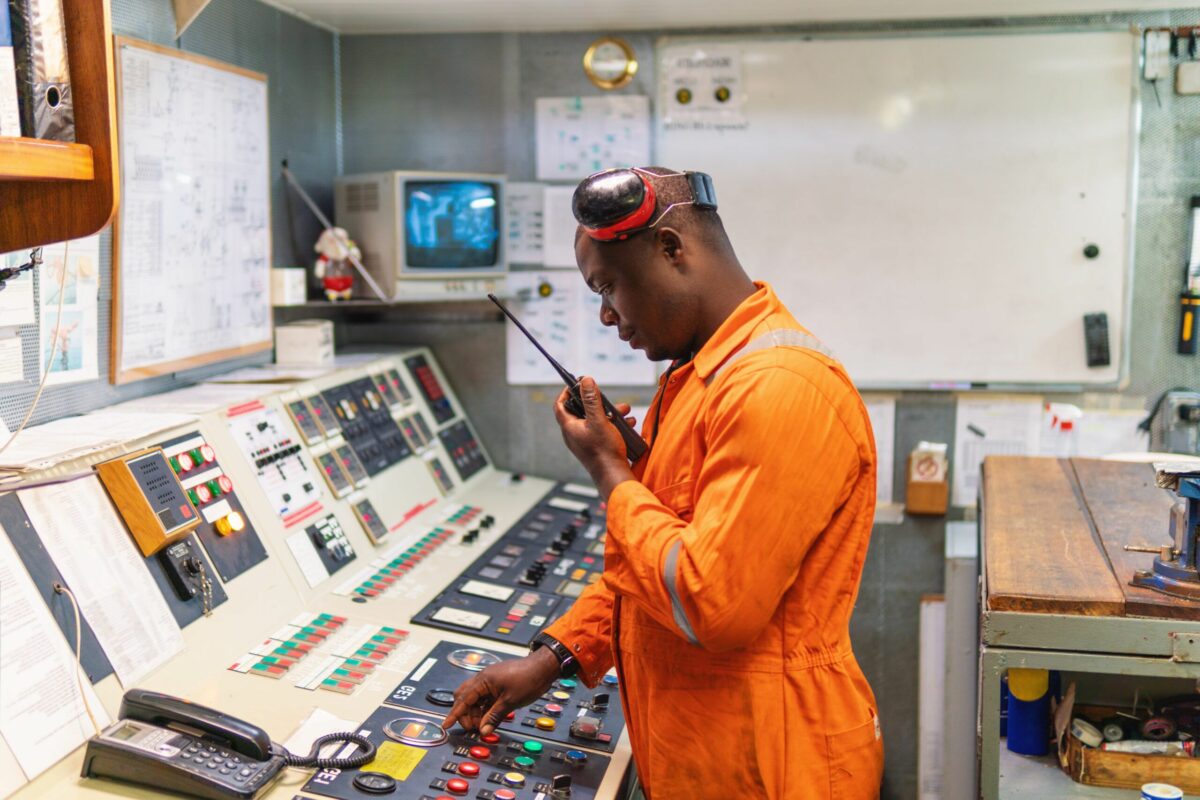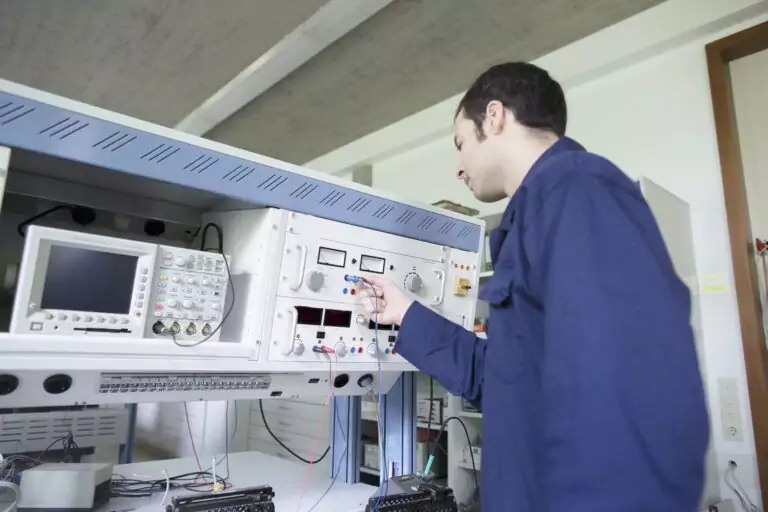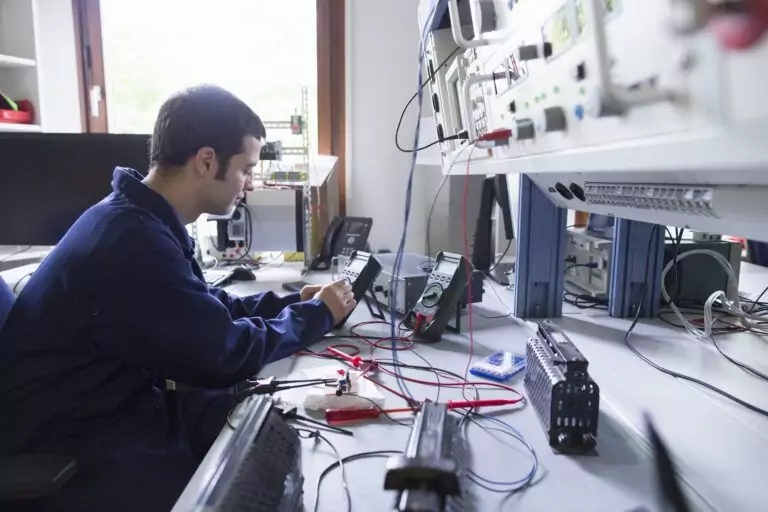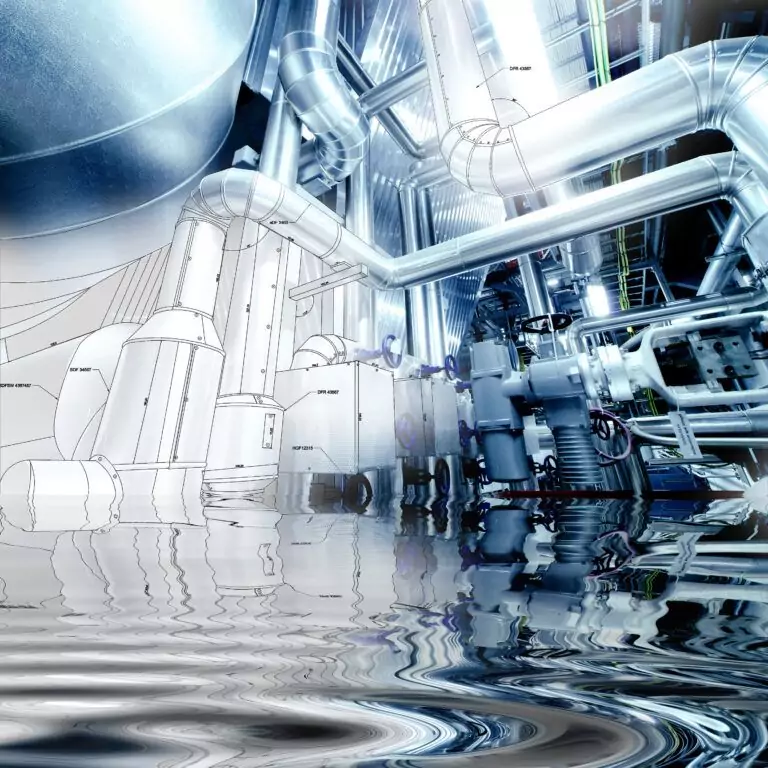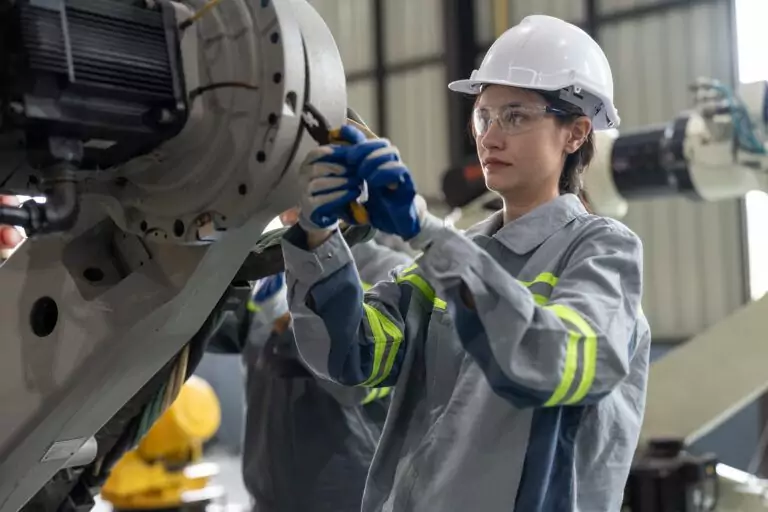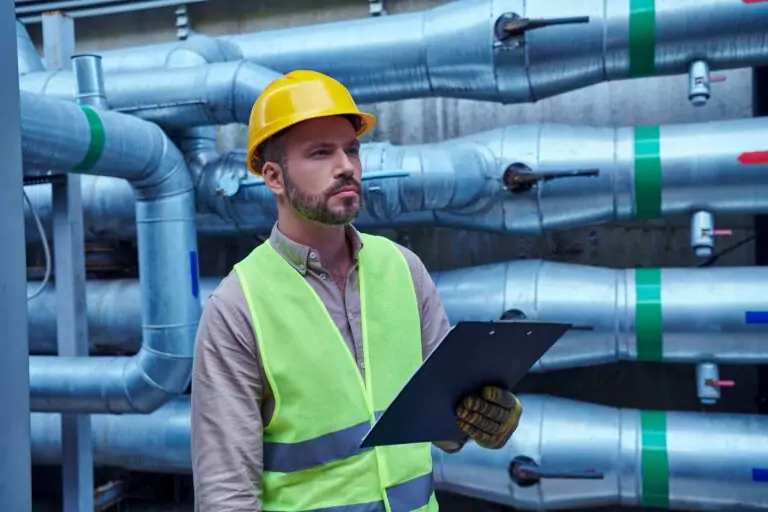Navigating the intricate world of instrumentation and control engineering is no small feat. From selecting the perfect sensors to ensuring seamless system integration, I&C engineers face a myriad of challenges that demand precision and innovation. Whether wrestling with equipment’s environmental demands or staying ahead of cybersecurity threats, each aspect requires a keen understanding and strategic approach.
This article delves into the common hurdles encountered in instrumentation and control engineering, offering insights into overcoming these obstacles. From ensuring accurate data collection and process control to managing aging infrastructure and coping with budget constraints, we explore the key considerations that pave the way for efficiency, safety, and sustainability in operations.
Identifying the Right Sensors and Instruments
Identifying the right sensors and instruments is crucial for ensuring accurate data collection, effective monitoring, and control in various applications ranging from industrial manufacturing to environmental monitoring. The selection process involves understanding the specific needs of the application, including the type of measurements required, the environmental conditions, and the desired accuracy and resolution of the data. Key considerations include the sensor’s sensitivity, the range of detection, response time, and compatibility with other system components.
Additionally, cost, durability, and ease of installation and maintenance are important factors. By carefully evaluating these aspects, one can choose the most suitable sensors and instruments, thereby optimizing the system’s performance and reliability. This process enhances efficiency and contributes to safety and sustainability in operations.
Accurate Process Control and Monitoring
Accurate process control and monitoring are paramount in maintaining the efficiency, safety, and reliability of various industrial and environmental systems. This necessitates the selection of sensors and instruments that can precisely measure and control specific variables. The accuracy, resolution, and response time of these devices are critical, directly influencing the effectiveness of process control strategies.
It is essential to make selections that meet the application’s requirements and integrate seamlessly into the existing control systems.
Considering Operational Environments: Corrosive, High Temperature, and Others
The selection of sensors and instruments must consider the operational environment, especially when dealing with corrosive substances or high-temperature conditions. Devices must be chosen for their ability to withstand such harsh environments without sacrificing performance or accuracy. This includes considering materials and constructions that are resistant to corrosion, high temperatures, and other environmental stressors.
Ensuring compatibility with the environmental conditions is crucial for maintaining long-term reliability and effectiveness in process control and monitoring, thereby safeguarding the integrity of operations and the safety of personnel and equipment.
Integrating Diverse Systems and Protocols
Integrating diverse systems and protocols is a critical challenge in instrumentation and control engineering aimed at ensuring seamless data exchange across various platforms.
This integration improves operational efficiency and supports scalability and future upgrades, ensuring that the control systems can evolve with advancing technology and changing requirements.
Ensuring Seamless Data Exchange Across Platforms
Ensuring seamless data exchange across platforms is crucial for the functionality of integrated control systems. The goal is to implement protocols and standards that foster interoperability among diverse hardware and software elements. Achieving seamless integration allows for uninterrupted data flow, facilitating real-time monitoring, analysis, and control actions, thereby eliminating compatibility issues that could impede system efficiency.
Overcoming Proprietary Technology Barriers
Overcoming proprietary technology barriers represents a pivotal challenge in system integration. Proprietary systems, with their unique protocols, restrict communication with devices and systems outside their ecosystem. Tackling this issue requires leveraging adapters, gateways, or middleware capable of translating between disparate protocols or promoting the use of open standards.
This strategy not only enables the integration of currently isolated systems but also paves the way for future system expansions and upgrades, securing the control system’s adaptability and sustainability.
Maintaining Accuracy and Reliability
Maintaining accuracy and reliability in instrumentation and control engineering is fundamental to ensuring the optimal performance of industrial processes. Ensuring the accuracy and reliability of instruments supports operational efficiency and reinforces safety protocols critical to industrial environments.
Regular Calibration Against Known Standards
Regular calibration against known standards is pivotal for maintaining the accuracy and reliability of instrumentation in control systems. This critical process ensures instruments provide precise readings, which are essential for the effective monitoring and control of industrial processes. By aligning instruments with recognized standards, calibration secures consistency and reliability in measurements, fostering trust in the data collected.
Mitigating Drift, Noise, and Interference Effects
Mitigating drift, noise, and interference effects is essential for preserving data integrity within control systems. Drift signifies the gradual deviation in an instrument’s accuracy over time. Noise and interference, on the other hand, introduce random or spurious signals that can severely compromise measurement accuracy.
Implementing targeted strategies to counteract these issues is crucial. Doing so ensures that control systems operate effectively and reliably, thus safeguarding operational efficiency and safety standards.
Ensuring Safety and Compliance with Regulations
Ensuring safety and compliance with regulations is a cornerstone of instrumentation and control engineering, pivotal for protecting both personnel and equipment. This involves the implementation of fail-safe mechanisms and redundancy to mitigate risks associated with equipment failure or operational errors. Compliance with industry standards such as IEC 61511 and ISA 84 is essential, setting the benchmark for safety instrumented systems and practices.
Adhering to these regulations not only promotes a safe working environment but also ensures legal and ethical responsibilities are met. Through diligent application of safety protocols and regulatory compliance, organizations can maintain operational integrity and protect their reputation in the industry.
Implementing Fail-Safe Mechanisms and Redundancy
Implementing fail-safe mechanisms and redundancy is critical for bolstering the safety and reliability of control systems. Fail-safe mechanisms are designed to ensure that, in the event of a system failure, operations revert to a safe condition, thereby minimizing the potential for accidents. Redundancy, on the other hand, refers to the duplication of crucial components or functions within a system to enhance its overall reliability.
Implementing fail-safe mechanisms and redundancy guarantees that the system remains operational even if one part fails, providing an additional layer of safety.
Compliance with IEC 61511 and ISA 84 Standards
Compliance with IEC 61511 and ISA 84 standards is imperative for the operation of safety instrumented systems within the process industries. These standards establish comprehensive guidelines for the design, implementation, operation, and maintenance of safety instrumented systems, aiming to achieve a high level of safety and reliability. By adhering to these standards, organizations can effectively prevent accidents, safeguard the environment, and fulfil their legal and regulatory obligations, thereby maintaining operational integrity and industry reputation.
Addressing Cybersecurity Threats
Addressing cybersecurity threats is increasingly critical in the realm of instrumentation and control engineering, where the integration of digital technologies exposes systems to potential cyber-attacks. Implementing robust encryption for data in transit and ensuring regular software updates to patch vulnerabilities are key strategies for safeguarding control systems. As cyber threats evolve, so too must the defences against them, requiring a proactive and dynamic approach to cybersecurity.
This practice not only protects the integrity and functionality of control systems but also secures sensitive data against unauthorized access, ensuring operational continuity and maintaining trust in technological systems.
Implementing Robust Encryption for Data in Transit
Implementing robust encryption for data in transit is a vital security measure, ensuring that sensitive information remains protected as it moves across networks. This safeguard prevents data from being compromised, making it unreadable and unusable to unauthorized individuals. Encryption serves as a critical line of defence, maintaining the confidentiality and integrity of data as it flows between devices and control systems.
Regularly Updating Software to Patch Vulnerabilities
Regularly updating software to patch vulnerabilities is key to a proactive cybersecurity strategy. Updates frequently contain critical fixes for security weaknesses that could be exploited by cyber attackers. Staying abreast of the latest patches fortifies control systems against known cyber threats, significantly reducing the likelihood of unauthorized access or system compromise.
Timely software updates are essential for upholding the security and resilience of instrumentation and control systems in the face of continually evolving cyber risks.
Managing Aging Infrastructure
Managing aging infrastructure is a critical aspect of ensuring the longevity and reliability of control systems in various industries. Conducting thorough risk assessments of older systems is essential for identifying potential failures and vulnerabilities that could impact operational efficiency and safety. Prioritizing critical system upgrades is crucial for maintaining system integrity, as outdated components can be less efficient and more prone to failures.
By strategically addressing the challenges posed by aging infrastructure, organizations can enhance system performance, reduce downtime, and ensure compliance with current safety and operational standards. This proactive approach not only safeguards assets but also supports sustainability by optimizing resource use and minimizing the risk of environmental incidents.
Conducting Thorough Risk Assessments of Old Systems
Conducting thorough risk assessments of old systems is crucial for identifying vulnerabilities that could compromise safety and operational efficiency. This detailed evaluation assesses the condition and functionality of existing infrastructure, highlighting areas susceptible to failure. By understanding these risks, organizations are empowered to make informed decisions regarding maintenance, upgrades, and replacements, safeguarding the reliability and safety of the systems.
Prioritizing Critical System Upgrades
Prioritizing critical system upgrades is vital for sustaining the integrity and performance of aging infrastructure. Focusing on the most vulnerable and essential components allows for the strategic allocation of resources, effectively minimizing the risk of system failures and operational downtime. Undertaking upgrades of critical systems not only boosts operational efficiency but also ensures adherence to contemporary safety and performance standards, thereby protecting assets and ensuring the well-being of personnel.
Coping with Budget Constraints
Coping with budget constraints is a significant challenge in instrumentation and control engineering, requiring innovative strategies to maximize the value of investments. Justifying ROI for new technology investments is crucial, as it enables decision-makers to understand the long-term benefits and cost savings associated with upgrading systems. Additionally, leveraging predictive maintenance can significantly reduce costs by preventing unplanned downtime and extending the life of equipment.
By carefully planning expenditures and focusing on strategic investments that offer substantial returns, organizations can effectively navigate financial limitations, ensuring the continuous improvement and sustainability of their control systems.
Justifying ROI for New Technology Investments
Justifying ROI for new technology investments is critical to showcasing the value and long-term advantages of modernizing control systems. Presenting a compelling case for the return on investment involves a detailed analysis of the potential cost savings, efficiency improvements, and enhanced reliability offered by new technologies versus the ongoing costs associated with older systems. This practice enables organizations to gain the necessary backing for adopting cutting-edge solutions that boost operational performance.
Leveraging Predictive Maintenance to Reduce Costs
Leveraging predictive maintenance represents a strategic method to minimize costs using data analytics and sophisticated monitoring tools. This proactive approach facilitates the early identification of possible equipment failures, allowing for preemptive action that averts expensive unplanned downtime and prolongs equipment life. By optimizing maintenance schedules and resource use, predictive maintenance significantly lowers operational costs while ensuring high system reliability and efficiency.
Keeping Up with Technological Advancements
Keeping up with technological advancements is essential for maintaining a competitive edge in the field of instrumentation and control engineering. Assessing the impact of AI and machine learning on system capabilities enables organizations to harness these technologies for enhanced data analysis, predictive maintenance, and operational efficiency. Additionally, incorporating wireless sensor networks offers flexibility and scalability, improving monitoring and control processes.
Staying abreast of these advancements not only optimizes current operations but also positions organizations to adapt to future challenges and opportunities, ensuring long-term sustainability and growth.
Assessing the Impact of AI and Machine Learning
Assessing the impact of AI and machine learning is pivotal for the evolution of control systems, driving significant enhancements in operational efficiency. These cutting-edge technologies enable sophisticated data analysis, fostering predictive maintenance and finely tuned process controls. Embracing AI and machine learning revolutionizes decision-making, minimizes downtime, and boosts overall productivity, marking a leap forward in control engineering practices.
Incorporating Wireless Sensor Networks for Flexibility
Incorporating wireless sensor networks introduces unmatched flexibility and scalability into monitoring and control systems. These networks allow for seamless real-time data collection from dispersed or inaccessible areas, broadening the scope of system monitoring. Integrating wireless sensor networks transforms control strategies, making them more adaptable and efficient, thus significantly elevating system performance and dependability.
Engineering Resilience in a Rapidly Evolving Field
Instrumentation and control engineering presents a complex landscape filled with challenges and opportunities. From selecting the right sensors to integrating diverse systems and from managing cybersecurity to embracing AI, we’ve covered the core hurdles engineers must navigate to ensure precision, safety, and efficiency.
At Vista Projects, we specialize in engineering solutions that meet these evolving demands, offering integrated system designs and control strategies tailored to complex industrial environments. Our expertise helps clients turn obstacles into opportunities for innovation and performance.
Ready to overcome your toughest I&C challenges? Connect with Vista Projects and let’s engineer a smarter, safer future together.
